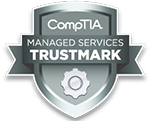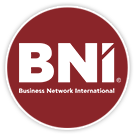Building a clear technical record of the hardware, software, servers and user profiles is an important part of keeping the network functioning smoothly. Documentation is a great visual reference of the make-up of the network; it also makes communicating the complexities to non-technical personnel easier.
Find out why our team providing IT solutions in Toronto focuses on network documentation and the benefits it offers for your business.
What is network documentation?
Documentation can be in any format but usually includes a combination of diagrams and textual explanations. The aim is to keep documentation simple enough so employees in non-IT roles are able to understand it while including all technical information that enables network recovery from a complete shutdown.
Importance of Documenting the Network
A visual representation of the network infrastructure has uses beyond just disaster recovery or troubleshooting. It is a vitally important document if the organization is undergoing expansion too. As experienced providers of IT outsourcing in Toronto, these are some of the benefits we have seen:
- Reducing the time required to research fixes for common problems
- Ensuring consistency across the network
- Preventing information loss if there is a reshuffle in IT support in Toronto
- Knowledge-sharing among employees and there is no single point of failure
- Faster onboarding of new hires
- Easier to explain networking infrastructure to non-technical employees
- Faster troubleshooting of network problems
What should be documented?
Our team for IT solutions in Toronto documents the network from the very outset because it is the most efficient way of creating a record. After all, it is much easier to compile technical information when it is fresh. Here’s what your business should document:
-
Network topology
This is a logical map of the network that lets you visualize the make-up of the network and the position of resources within it. It is a great way to understand the network’s hardware and user profiles at a glance.
-
Hardware directory
This record of the hardware used in the network includes descriptions, serial numbers and comments about precautions when handling. It is invaluable when hardware needs to be added or replaced.
-
Software directory
It is a record of all the software that is authorized to be used in the organization, license numbers, limitations and where it is installed. A comprehensive directory will also include invoices, contracts and service level agreements.
-
Wi-Fi chart
A diagram of the wireless infrastructure includes the servers, routers, and switches. To make troubleshooting easier, it also mentions the location of access points, Wi-Fi configurations, and information for guest SSIDs.
-
IP address record
It is important to have a thorough list of all the IP addresses that have been assigned internally and externally. Since IP addresses can be reallocated, a provider of IT outsourcing in Toronto must continually update the record, including subnet assignments, devices, and MAC addresses.
-
Cloud platform documentation
The cloud is an extension of your business and must be included within each relevant record. Separate cloud architecture charts are important for troubleshooting and demonstrating compliance.
-
Server diagram
A server rack diagram shows how the equipment on the rack is organized and connected. It takes the guesswork out of finding out how systems are connected.
IT Solutions in Toronto
NUMENTIS builds complete and comprehensive documentation about all aspects of an organization’s IT infrastructure. Contact our IT support in Toronto to find out how we help businesses stay organized and make IT scaling more efficient.



